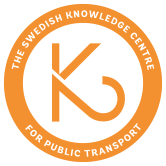This paper contributes to the understanding of spatiotemporal accessibility inequalities by exploring how the current public transport (PT) provision affects the time wealth of PT users living in two peripheral neighbourhoods in Malmo. The ¨ paper investigates time-related resources and constraints that concur in defining accessibility inequalities, identifies forms of temporal disadvantage and privilege and addresses the relevance of recognizing and meeting the multiple time-related needs of (potential) PT users. Adopting a mixed-methods approach, the study integrates results from a thematic analysis of interviews and from a GIS spatiotemporal accessibility analysis of PT schedules to understand whether and how the current PT provision (a) allows users to carry out the desired or needed activities by PT in the time available to them, (b) is harmonized with their spatiotemporal access needs and (c) supports or hinders the users’ ability to control their travel time. The paper suggests that, in the observed cases, the PT provision provides unequal opportunities for faster connections and information, exposing some users to time-related transport disadvantage. Also, the current PT provision does not always seem to be harmonized with the participants’ access needs, especially during off-peak hours. The findings highlight the importance of taking into consideration the time wealth of (potential) PT users with different access needs, resources, and constraints, with the aim to both tackle transport disadvantage and support the adoption of sustainable modal choices. The study provides directions for further spatiotemporal accessibility research and for urban time and mobility policies.
